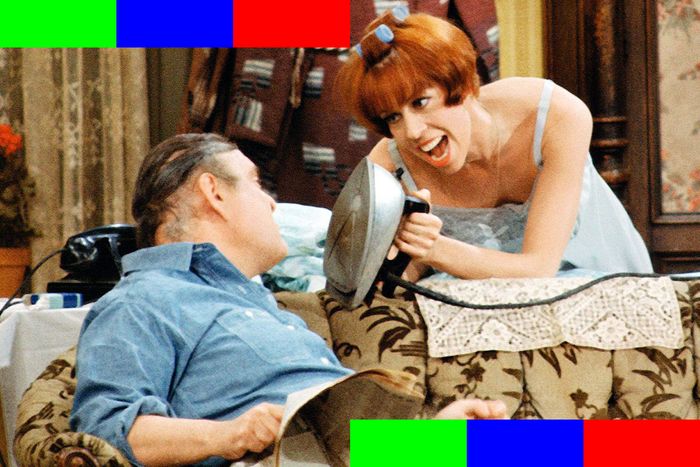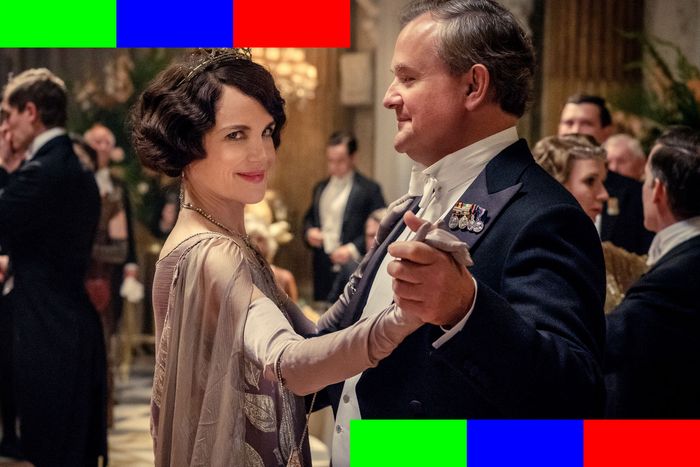
Network TV entertainment ratings aren’t surging as much as broadcast or cable news shows, in part because there’s so much competition from streaming platforms. But that doesn’t mean linear networks aren’t being rewarded for getting creative and taking chances. ABC’s Disney Family Sing-a-Long drew more than 12 million viewers last Thursday, bringing kids and parents together in a way that rarely happens anymore on network TV. The Lady Gaga–inspired multi-network music special One World: Together at Home was seen in America by 21 million viewers, not counting streaming audiences. And ESPN’s decision to move up the premiere date for its Michael Jordan bioseries The Last Dance resulted in the best-ever Nielsen numbers for a documentary in the network’s history. Here’s hoping that once the pandemic passes, linear networks will continue taking creative gambles — especially since, as this week’s Buffering underscores, the mighty Netflix is only growing stronger. Also in this edition: Some scoop on two big classic TV shows getting a streaming push and a look at the Australian soap opera getting ready to go back into production in the middle of the coronavirus crisis.
Netflix’s Pandemic Report Card: A Record Subscription Surge
Before yesterday, logic suggested Netflix was likely doing very well during the coronavirus crisis and the era of social distancing. People around the world are stuck at home, they’re looking for things to watch — so, yeah, the international streaming giant with a massive content library and a relatively cheap price is probably doing okay signing up new subscribers and keeping the ones it already had.
But now we have data to back up the hunch: Netflix added 15.8 million new subscribers worldwide during the first three months of 2020, more than doubling its growth forecast for the quarter. It was the largest one-quarter growth spurt in the company’s history as a streamer. (Remember when some folks thought losing Friends and the launch of Disney+ was going to spell doom for Netflix?)
Yet during an investor interview on Tuesday, Netflix brass were actually quite muted in their response to these blockbuster numbers, and with good reason. Given what’s going on in the world right now, this is no time to be publicly gloating about blowing past even the most positive forecasts for its first-quarter performance. But it is also a reflection of how unsustainable the first-quarter growth will likely be. Because so many people are signing up now during the pandemic, there’s a good chance the big spike in March sign-ups will end up being “essentially a pull forward of the rest of the year,” as Netflix CEO Reed Hastings noted during the investor call. In other words, consumers who might have signed up later in 2020 simply went ahead and did so earlier because of the great lockdown. “If you are locked up inside your home for 180 days with nothing to watch and you didn’t sign up for Netflix, why are you rushing out to subscribe when social distancing rules may perhaps start loosening up?” MoffettNathanson analyst Michael Nathanson wrote Wednesday in a report on Netflix’s earnings.
Hastings said the company’s “guess” is that net new sign-ups will be “light” in the second half of 2020 as a result of the pandemic bump, but he also conceded that he really didn’t know how things would play out, given how much uncertainty there is in the world right now. “The things we are certain of is the internet is growing. It’s a bigger part of people’s lives, thankfully. And people want entertainment. They want to be able to escape and connect, whether times are difficult or joyous.”
The Wall Street take: Nathanson, who remains neutral on Netflix’s future stock price, was still relatively upbeat about the first-quarter report, if only because the company appears so much better positioned than its rivals. “The longer the current situation lasts, the bigger the benefit to Netflix as both linear and OTT competitors will be unable to debut new original content,” he wrote. “In addition, given the looming negative impacts to advertising, movie theater attendance, and cord-cutting, traditional content owners will be forced to reduce their content spending into the future to preserve free cash, which should make Netflix a long-term winner.”
He also dinged the other big general-entertainment streamers for being slow to expand their international operations. “The unwillingness of Peacock or HBO Max or even Hulu to aggressively build out outside the U.S. is a singular gift to Netflix,” Nathanson said. Netflix’s unrelenting global expansion and content spend “should begin to generate meaningful long-term advantages as more cords get cut and other studios slow spend.”
Plenty of programming: Another big takeaway from Tuesday’s earnings report was that Netflix is not currently planning to change much of its 2020 programming schedule in response to COVID-19. It’s had to shut down most of its scripted productions just like the rest of the global entertainment business. But “one thing that’s maybe not widely understood is we work really far out relative to the industry because we launch our shows all episodes at once,” Netflix content chief Ted Sarandos said. “So our 2020 slate of series and films are largely shot and are in postproduction remotely in locations all over the world. And we’re actually pretty deep into our 2021 slate … So we don’t anticipate moving the schedule around much, and certainly not in 2020.”
Sticking to the binge model: Sarandos also ruled out switching some shows to a weekly episodic pattern to make them “last” longer. “Customers have spoken loud and clear that they really like the options of the all-at-once model for us, so I don’t see us moving away from that meaningfully,” Sarandos said. The streamer will continue to experiment with models — a few reality shows, most notably Love Is Blind, have come out in batches — but for the most part, the Netflix binge release will remain status quo.
Ozark blows up: As per its recent custom, Netflix released a tiny bit of data about which of its shows are getting sampled by subscribers. Since they’re not independently verified and only measure which member accounts check out two minutes of a title, they’re not really ratings, and the specific numbers Netflix puts out don’t tell the full story of a show’s performance. Still, they are useful in terms of tracking which shows and movies the streamer deems successful, and this quarter’s winner list includes Tiger King (duh) and Love Is Blind, plus scripted dramas Ozark, Money Heist, and the Mark Wahlberg movie Spenser Confidential.
Ratings giant Nielsen backed up Netflix’s Ozark boasting — sort of. It reported Wednesday that the drama’s third season had an average audience of 8.7 million U.S. viewers during its first ten days of release, up about 57 percent versus the 5 million who watched season two during a similar time frame in late summer 2018. Nielsen also said 16.4 million viewers sampled at least a few minutes of Ozark season three within its first ten days. That latter number is a similar metric to Netflix’s “chose to watch” figure, and it’s interesting to note that Netflix and Nielsen aren’t that far apart. Netflix is projecting that Ozark will be sampled by 29 million member accounts within its first 28 days. Unlike Nielsen, Netflix includes viewing on all platforms (including mobile) and tallies views around the world.
WarnerMedia’s Wobbly Quarter
The news this week over at Netflix rival WarnerMedia wasn’t so rosy. Parent company AT&T said the division lost over $1 billion during the first quarter of 2020, though it was a good kind of loss: The decline was mostly because of costs associated with HBO Max. The scarier numbers in the report revolved around subscribers. While Netflix soared, WarnerMedia’s pay TV networks (which include HBO) lost a total of 1.2 million traditional cable customers, while AT&T division DirecTV shed nearly a million more homes. On the bright side, an increase in digital subscriptions helped HBO’s overall revenues inch up 1.9 percent, while Turner (the WarnerMedia division that houses basic cable channels such as TNT and TBS) saw its revenues rise 1.6 percent.
We’ll get a far better look at where WarnerMedia stands when it next reports earnings in July. As we learned this week, HBO Max debuts on May 27, and the second-quarter earnings will offer a good indication of how successful the company has been getting audiences to try out Max.
Does This Australian Soap Opera Point the Way Back for TV?
The biggest question in TV circles right now isn’t when production will start up again, but how? Most industry insiders I’ve talked with believe September is the earliest most shows will begin filming (though the New York Times suggested on Monday that August could be a possibility). What nobody knows yet is how studios and platforms will figure out a way to make sure sets are safe and that actors feel comfortable returning. And given the very real possibility of a second, perhaps deadlier wave of COVID-19 infections come fall, there has to be concern about spending millions to start things up again only to have to shut things down within a month or two.
During the investor interview, Sarandos said Netflix was, like everyone else, trying to figure out the best path forward. “A series of things have to happen before we get into production anywhere, including the shelter-at-home orders being relaxed,” he said, adding that which shows return when will “vary by geography” and by the type of show. “But even in that environment, we’re going to make sure that there’s testing that has to be able to be done. We have to be able to look our employees and our cast and crews in the eye and say that this is a safe place to work before we do that.” Sarandos said Netflix was “currently in production in Iceland and in Korea” and was hoping to use that experience to guide how it starts up again in other parts of the world. (A company rep declined to say which projects were currently filming.)
Sarnados and other entertainment execs may also be looking to see how things play out in Australia. That country’s long-running soap Neighbours (available here on Tubi!) is about to resume production after a multi-week hiatus. Australia’s government has done a good job so far of stopping the spread of the virus, leading producer Fremantle Australia to give the okay to start the cameras rolling again, per a report from Australia’s ABC network. That doesn’t mean there won’t be big changes.
• The sexy soap will be a lot less sultry than usual, with no scenes of kissing or hand-holding.
• Camera trickery will be used to make it look like actors are closer than they appear in scenes, allowing for a certain amount of on-set social distancing.
• The production will be split into four distinct units, “with an operational hub, three distinct production teams and only three actors allowed to cross between the units,” ABC reported.
• Male actors will mostly go without makeup, while female actors will apply their own.
One part of the American TV industry particularly anxious to see how the Neighbours experiment turns out is the soaps business. As I reported this week, CBS daytime dramas The Young and the Restless and The Bold and the Beautiful run out of original episodes this week. The network will air “classic” episodes for now, but if those don’t do well in the ratings, CBS and ABC (whose soap supply will also run out in a few weeks) may consider replacing the soaps with other kinds of programming. And even if they don’t, U.S. soaps have already suffered massive audience declines over the past decade and can’t afford to lose many more viewers. The longer they’re away, the more likely it is that even some die-hard soap fans will fall out of the daily habit of watching.
Something to Shout! About
It’s great that the Friends digital drought is ending soon, but hard-core classic TV fans have something even bigger to celebrate: All 11 seasons of The Carol Burnett Show are finally coming to streaming. Indie distributor Shout! Factory TV snagged the digital rights to the legendary CBS sketch comedy late last year, and it’s been quietly rolling out episodes of the show since mid-February:
• As of today, edited episodes of the first ten seasons of the show are available for Amazon Prime Video subscribers.
• On May 30, Shout! will program a two-day marathon of Carol Burnett Show episodes on its Shout! Factory TV website and connected TV apps, as well as on a slew of ad-supported streaming platforms such as Pluto TV, Stirr, Twitch, YouTube, and Xumo.
• And on June 1, Buffering can report first, Prime Video will add season 11 of the show, while Shout! Factory TV and its branded channels on the aforementioned platforms will also begin streaming the full series. Episodes will be free and ad-supported, except on Prime Video and Shout!’s own streaming subscription service on Amazon Channels, where they’ll run commercial-free.
While various episodes (and collections of episodes) have been available for digital download since 2018, June 1 will mark the first time the entire series will be available to watch via ad-supported or subscription streaming. Previously, audiences either had to buy compilations through Time Life or, for the past few years, catch reruns on MeTV. One reason it’s likely taken so long to finally get the show on streaming: Financially, there was probably more money to be made via DVD sales of the series than through streaming, particularly since Burnett’s older fan base still buys DVDs. But with the DVD market far less robust than it was even a few years ago, “now it’s a logical evolution to make it available on streaming platforms,” Shout! Factory senior VP of programming and new business development Jeff Peisch tells me.
There is one important asterisk attached to the Burnett news: The episodes streaming will be the half-hour syndicated version of the program and not the full hour-long editions broadcast on CBS until 1978. Most of the big musical-production numbers were cut when reruns moved to syndication, both because of time (local stations preferred a shorter format) and because of rights issues. Burnett supervised the editing of her episodes back in the late 1970s, and most of her sketches survived. In some cases, she and her producers combined bits from different episodes to make sure the best stuff wasn’t completely lost. (That’s why the syndicated and Shout! collection includes 291 episodes versus the 279 from the CBS run.)
I asked Burnett last year whether we’d ever see the restored episodes, complete with musical numbers, hit streaming or TV again, and she wasn’t hopeful. “The cost is prohibitive,” she said, referring to music licensing. “We did some pretty elaborate and miraculous medleys. We would take a composer, like Gershwin or Cole Porter, and we would make a story out of their music. Like an opera. We called them mini-musicals, and they were just wonderful and funny. But now, I don’t think we could get clearance from the Rodgers and Hammerstein estates and things like that.” Peisch explains that some of Burnett’s medleys would have as many as 25 songs in them, making getting the rights to stream said music both time-consuming and expensive. “If we did the hour-long shows, it would mean getting thousands of songs cleared,” he said. Nonetheless, Shout! did get some songs cleared — enough for about 300 or so musical performances to be included in the package, mostly from the show’s earlier seasons.
Hiyoooo, look what else is streaming: It got lost a bit in the middle of the pandemic pandemonium, but Shout! last month also announced that it had acquired digital rights to the full 5,000-episode (!!!) library of The Tonight Show Starring Johnny Carson. Dozens of episodes are now on Shout! Factory TV and Prime Video, along with many of the aforementioned platforms that will be streaming Burnett’s show. These are the same episodes that have been airing on digital broadcaster Antenna TV for a few years now, and they’re mostly full-length. (Musical performances have mostly been cut, but Carson didn’t have nearly as much music on his NBC show.) They’re also called The Johnny Carson Show rather than The Tonight Show (probably because NBC owns the right to the name and is somehow worried folks will confuse Carson’s old show with the one now hosted by Jimmy Fallon). Right now, Prime Video has the largest collection of episodes (110 spread out over eight themed collections), but Peisch says his goal is to get as many as 600 episodes streaming at some point.
Looking for Some Quality Costume Dramas?
Our weekly check-in on streaming platforms you might not know about continues …
Kocowa
Dramas, variety shows, and K-Pop programming drawn from the libraries of three big Korean TV networks (who also happen to jointly own the service). Beyond a rich collection of VOD titles, the platform also has Taste 24HR, which streams shows airing on linear TV in South Korea a day after their original broadcast (sort of like Hulu does in the States). And you don’t need to speak Korean to enjoy: Most shows have English-language subtitles.
Cost: $1 per day/$7 per month/$70 annually
PBS Passport
It’s all (well, most of) the goodness of PBS, but on demand. While PBS makes a good deal of current content available to stream for free via its app, you need to have the Passport service to stream past episodes of drama faves such as Downton Abbey and Poldark. You’ll also find dozens of unscripted shows, including Nova, Frontline, and American Experience, as well as programming from your local PBS station. (If you want kids’ programming, check out the PBS Kids app.)
Cost: Instead of a set price tag, you just have to make a monthly or annual contribution to your PBS station, which also determines how much that donation needs to be to grant Passport access (though $5 per month is usually enough).
Seed & Spark
It doesn’t get more indie than this crowdsourced film and TV incubator, which helps creatives fund their projects (including this eerily prescient one about a family sheltering in place to avoid a mysterious germ) and then gives them a platform to let them be seen. The Seed & Spark streaming service includes a robust collection of movies, shorts, and documentaries, with nary a blockbuster to be found: “A streaming library selected by film-loving humans instead of algorithms,” the site’s sign-up page promises, leaning into the Netflix shade. Save for some random stand-up specials from folks like Marc Maron and Jim Gaffigan, there aren’t any titles most people will have heard of — but that’s actually what makes Seed & Spark so appealing. It’s available to watch via laptops, mobile, or Roku app.
Cost: Pay what you can (though there’s a $3 per month minimum).
The Time Capsule: When Carol and Helen Roared the Hits
While many of the best production numbers from The Carol Burnett Show aren’t part of the show’s streaming release, you can still find some of them on YouTube. Burnett’s duets with Julie Andrews are legendary, but I love this megamedley of hits from the ’60s and ’70s that she did with Helen “I Am Woman” Reddy. One minute they’re doing a mournful rendition of Bread’s “If”; a few seconds later they’ve jumped to “The 59th Street Bridge Song (Feelin’ Groovy)” by Simon & Garfunkel; and then all of a sudden they’re on to a mash-up of the intro to “Eleanor Rigby” and Barbra Streisand’s “People.” It’s earnest; it’s corny; it’s perfect.
Parting Shot
“I’ve been so impressed with the Disney+ execution. Over 20 years of watching different businesses like Blockbuster and Walmart and all these companies, I’ve never seen such a good execution of the incumbent learning the new way and mastering it.”
— Netflix’s Reed Hastings on Disney+ tallying 50 million subscribers in under six months.







